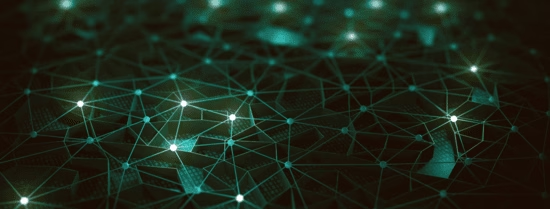In November 2023, Chris Müller and Welmoed van Deen, lecturers at Erasmus University Rotterdam (EUR) presented about their experience with AI during a Community for Learning & Innovation (CLI) Network Lunch. In the rapidly developing world of education and technology, they decided to experiment with generative artificial intelligence (GAI) within their courses. How did they do this? By cleverly implementing ChatGPT in the assignments.
First meeting with ChatGPT
Chris Müller has a background in biology, a PhD in Human Movement Science and teaches at Erasmus University College (EUC) in the fields of neuroscience and musicology. His first encounter with generative AI was in the form of ChatGPT. Immediately after the launch of ChatGPT, he became interested in the tool and started experimenting. First, he asked for the tastiest Hummus recipe. The answer ChatGPT gave was not new information for him. Nevertheless, it managed to spark his interest further. At that moment, Müller was preparing his course. He read essays on ChatGPT and recognised that it was difficult to ban. "ChatGPT had to have a place within my course and there was no reason not to do it, so I decided to implement it," Müller says.

Experimenting with ChatGPT in education
To test ChatGPT within his course, Müller came up with an assignment that required students to use the chatbot to write the introduction of a scientific article, and then reflect on its use. In addition, students had to point out at least three factual inaccuracies in the texts generated by the chatbot. Part of a grade was also attached to this reflection. Although there was a lot of interest, students noted that there were many obstacles. One of the challenges was the inconsistency in generated text, it often did not make sense and had missing, non-existent or irrelevant references. Students wrote extensive reflections on these experiences. Had these reflections not been part of the grade, students would not have been nearly as critical of ChatGPT's generated text. After these experiences, Müller decided to integrate ChatGPT into his other courses as well, albeit on a more voluntary basis.
Reflecting on ChatGPT
In evaluating the integration of ChatGPT into his courses, Müller made some notable observations. For instance, he shared his thoughts on feeding the model and the ethical considerations surrounding the use of AI. He stressed that any message you feed into generative AI is used to further develope the model. This led to discussions on copyright. During the preparation, Müller also struggled with the part of the assignment he was willing to sacrifice for the sake of ChatGPT.
A notable result was the low response from students when using ChatGPT in another (programming) course. Many of them reported that using ChatGPT required too much effort for their assignment, as they had to filter the errors out of the answer themselves. As a result, some students preferred not to use the chatbot. Additionally, Müller noted that some students actually continued to use ChatGPT outside the assignment, resulting in unintentional plagiarism. These are important considerations for teachers who might want to implement ChatGPT in their teaching.

The use of AI in Health Sciences
Welmoed van Deen, a lecturer at the Erasmus School of Health Policy and Management (ESHPM), took a different approach in her course. She designed a group assignment in which students were allowed to use AI for stakeholder analysis, with some limitations and the obligation to justify their choices. According to Van Deen, there were few complaints from students and the use of AI in the assignment did not seem to be a major problem. This was despite the possibility that the bot could generate faulty insights. Based on her evaluation, she found that the grades of students who chose to use AI did not necessarily increase or decrease because of it. Nevertheless, Welmoed does stress that she plans to make some changes to her course next year, taking into account the new version of ChatGPT.
Future Steps
Next year, Chris Müller is reintegrating ChatGPT into the neuroscience course. He is taking some adjustments with him, though. For instance, he is going to schedule reflection moments during class activities to discuss the pros and cons of using ChatGPT. The assignment will also take a slightly different form, as having to identify factual inaccuracies from the outcomes given by the chatbot will become more difficult as ChatGPT gets newer, better versions.
Müller certainly encourages other teachers to use some form of generative AI within their courses. "In the beginning it is scary. The answers that come out seem very strong and convincing, but if you look at them critically there are also plenty of errors in them," says Müller. Using Generative AI in education remains an experimental journey, with teachers discovering new challenges and opportunities. Sharing experiences and reflections, as Chris and Welmoed have done, can make a valuable contribution to the growing use of Generative AI in education.
Downloads
Download the PowerPoint presentations of Chris and Welmoed.
- More information
Would you also like to share your experiences implementing Generative AI in education? Or are you looking for tools? Then take a look at the 'AI tools in education' page.
- Related links
- More CLI news

